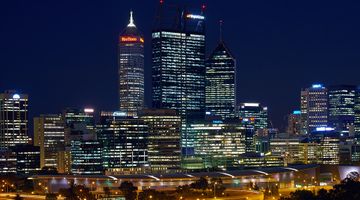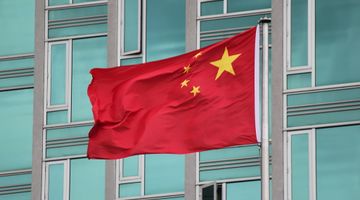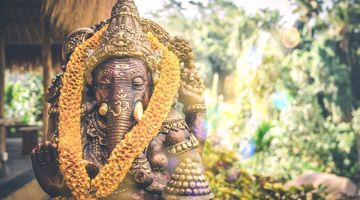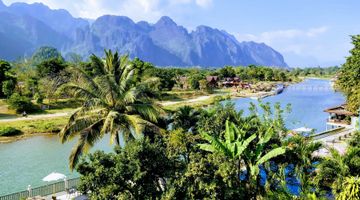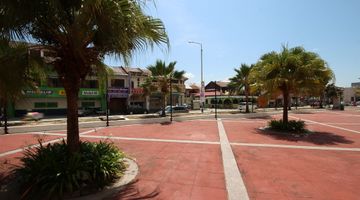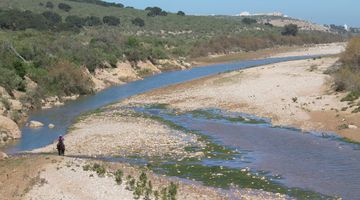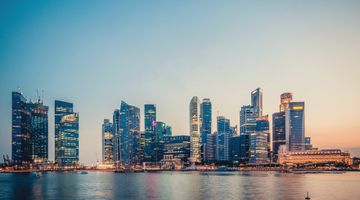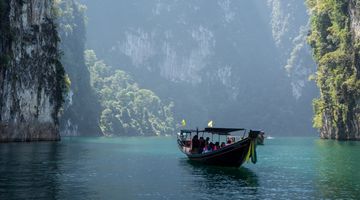South Korea Travel Guide. Why you should go here in 2025?
South Korea moves with quiet precision—trains run on schedule, food is served without fuss, and cities reveal themselves in the small details. Each city has its own texture, from the concrete and glass of Seoul to the rugged volcanic coast of Jeju.
Why you should visit South Korea?
South Korea offers a landscape where old and new coexist without pretense—ancient temples and modern skyscrapers sit side by side, and everyday life moves with a mix of relentless energy and moments of unexpected stillness.
It’s a place where details matter: the texture of stone walls in a hanok village, the precise sizzle of meat on a grill, the quiet hum of a subway at night—small things that add up to something you don’t quite find elsewhere.
Weather in South Korea
South Korea’s weather shifts sharply with the seasons: winters bring a dry, cold air mass that presses in from the north, often dusting cities and mountains with snow, while summers are hot and humid, thick with sudden rains and occasional typhoons.
Spring and autumn are brief but distinct—spring wakes the landscape with pale blooms and a brittle chill, autumn colors the trees in muted golds and reds before winter’s return.
January–February: The air is sharp and dry, winters biting especially at night. Snowfall is common in the mountains and sometimes dusts cities, lending a quiet, pale stillness.
March–April: Early spring is brittle, with sudden warm days punctuated by cold snaps. Cherry blossoms appear briefly, their delicate petals a stark contrast to lingering chill.
May: The first genuine taste of warmth, with fresh green leaves and air that feels clean but still cool enough to hold onto.
June: Humidity creeps in, and rain begins to fall more steadily. The city streets grow slick, and the summer haze starts to settle.
July–August: Summers are hot and heavy, the air thick with moisture. Sudden downpours and occasional typhoons interrupt the heat, pressing against city walls and mountain slopes alike.
September: A brief reprieve from heat; the air sharpens, and skies clear, hinting at autumn’s approach.
October–November: Autumn arrives with a quiet transformation. Leaves turn muted gold and red, and the days grow crisp but not yet cold, a slow fading from warmth to chill.
December: The return of cold, often dry and still, the last breath before winter closes in again.
Transportation in South Korea
South Korea’s transport is a study in efficiency without fuss. The KTX trains slice through the country, shrinking distances between cities with punctual precision.
Subways in Seoul and Busan thread through underground tunnels, marked by clean stations and reliable schedules, making urban movement predictable if crowded.
Buses fill gaps between places not served by rail, often frequent and straightforward, while taxis wait ready but rarely cheap. For travelers, a T-money card simplifies payment across buses, subways, and even some taxis, reducing the need for exact change or multiple tickets.
Where to travel in South Korea?
Seoul
Capital City of Korea, entry point, and sometimes the whole reason to stay. Don’t rush Seoul. It has too many layers.
So where to go in Seoul?
Gwangjang Market
This is where you can start your trip if you’re a food lover. The mung bean pancakes, bindaetteok, are greasy in the right way. You can sit elbow to elbow with strangers and dip them in soy sauce while watching butchers slice raw beef for yukhoe.
Bukchon Hanok Village
A walk here is quiet if you go early. Real homes, lived-in silence, with tiled roofs catching the morning light. It's not about taking photos—it’s about understanding how the past still sits beside the present.
Insadong
The street art shops are hit-or-miss, but the traditional tea houses—especially the ones hidden in courtyards are worth ducking into. Hot rice cakes, roasted grain tea, and a break from screens.
Gyeongbokgung & Deoksugung
If you only visit one palace, pick based on your mood. Gyeongbokgung is grand, wide, perfect for photos. Deoksugung is smaller, shaded, more personal.
Dongdaemun Design Plaza (DDP)
More than architecture. At night it feels like the city recharges here—people resting, skateboarding, staring at LED roses. You don’t have to be an art lover to stay awhile.
Gangnam
Cafés go four stories high, basements hide clubs, and Korean BBQ hits different here—sleek, fast, smoke still clinging to your clothes the next morning.
Myeongdong
For skincare, snacks, and that overwhelming feeling of choice. Try tteokbokki, hotteok, and sweet-salty tanghulu off carts. Skip the big chains—find a side alley and eat standing up.
N Seoul Tower
Go if you want the view. But Seoul’s real story is always below—between subway exits, behind convenience stores, in cafes that open past midnight.
Nearby escapes from Seoul include:
Nami Island, Gapyeong.
Take a train, then a ferry. It’s touristy, but once you walk past the crowds, the trees start talking. Go in late fall or deep winter. Rent a bike if you’re not in a hurry.
The Garden of Morning Calm.
Best in spring or deep winter when the lights are up. Quiet trails, curated landscapes, and a calm that earns the name.
Suwon Fortress, Hwaseong-si.
Suwon doesn’t scream for attention, but this old stone wall that loops around the town has patience. Walk it. Especially near sunset.
Where to go from Seoul?
Seoul to Busan
To get from Seoul to Busan, you can take a train, flight, or taxi. Trains are the most popular choice with prices ranging from $29 to $73 and travel times from 2.5 to 5.5 hours, while flights are faster (1 hour) and cost $40 to $110. Taxis are the most expensive option, starting at $341.
Seoul to Jeju
The only way to travel from Seoul to Jeju is by flight, with over 300 departures daily and ticket prices starting at $18. The flight takes about 1 hour, while overland or ferry routes can take up to 14 hours.
Seoul to Andong
The distance from Seoul to Andong is about 71 miles (114 km), and the journey takes around 3 hours by train. There are 4 trains per day, with ticket prices starting at $29.
Seoul to Jeonju
The only travel option from Seoul to Jeonju is by train, with 5 departures daily. The journey takes about 4 hours, covering 58 miles (93 km), and tickets start at $23.
Busan
Busan is a city where the sea’s presence is unavoidable, from the salt in the air to the constant movement of its harbors. Jagalchi Market operates like a living organism—fish vendors shout over the clatter of scales and knives, selling everything from slippery octopus to glistening shellfish, all fresh enough to still be alive.
Nearby, the smell of grilled mackerel and seafood stews seeps out of small restaurants packed tight with locals. Gamcheon Culture Village spreads like a patchwork quilt of color and cracked concrete up the hillsides, where graffiti and murals compete with laundry lines and rooftop antennas.
The city’s edges are rough—unfinished roads, narrow stairways winding through residential blocks, the occasional abandoned lot turned into an impromptu garden. Busan’s beaches, like Haeundae and Gwangalli, are less about sunbathers and more about the sound of waves underfoot and the distant hum of cargo ships.
After dark, Seomyeon’s streets glow with neon signs advertising karaoke bars, smoky BBQ spots, and late-night street food stalls offering tteokbokki and fried chicken. Busan doesn’t pause to charm; it’s always moving, restless but grounded in the grit of its everyday rhythm.
Where to go from Busan?
Busan to Jeju
You can travel from Busan to Jeju by flight or ferry, with flights being the fastest and most popular option—about 67 per day—with prices ranging from $16 to $270. Ferries are slower but more scenic, costing around $41 and best booked in advance, especially during high season.
Busan to Seoul
To travel from Busan to Seoul, you can take a train, flight, or taxi. Trains are the most popular option, with 29 departures daily, travel times from 2.5 to 5.5 hours, and ticket prices ranging from $29 to $74. Flights are faster (about 1 hour) and start at $35, while taxis offer door-to-door service but cost from $345.
Busan to Fukuoka
You can travel from Busan to Fukuoka by flight or ferry. Flights are the fastest and most popular option, with about 59 daily departures and fares from \$47. Ferries are slower, more scenic, and depart 11 times a day, but can cost up to \$439. Travel time ranges from 1 to 26 hours, depending on the mode.
You can travel from Busan to Daegu by train, flight, or taxi. Trains are the fastest, most popular, and most affordable option, with 22 daily departures and fares from $12 to $15. Flights cost between $61 and $148 but take longer due to airport procedures. Taxis offer a private ride with flexible stops, but prices range from $318 to $534. The distance is about 61 km, and travel time varies from 2 to 26 hours depending on your transport choice.
Incheon
Incheon often feels like a city caught between nowhere and somewhere else. The airport buzzes with travelers but the city beyond spreads wide and flat—industrial zones, shipping docks, and residential blocks that stretch with little fanfare. Chinatown offers a break from the monotony, its narrow streets lined with faded signs and small restaurants where the scent of soy and garlic lingers.
Along the coast, old fishing villages hold tight to their rhythms, boats rocking quietly against the concrete piers. The Incheon Bridge slices across the water, a reminder of the city’s role as a gateway rather than a destination. Here, the everyday is unvarnished: factories hum, markets sell their goods without ceremony, and the vast expanse of sky often feels like the only space left untouched.
Where to go from Incheon?
Incheon to Busan
You can travel from Incheon to Busan by flight or taxi. Flights are the fastest and most budget-friendly, with tickets from $44 to $186. Taxis offer a private and flexible option, but prices range from $409 to $709. The distance is about 851 km, and travel time varies from 1 to 18 hours depending on your choice.
Incheon to Seoul
You can get from Incheon to Seoul by train, bus, or taxi. The fastest and cheapest option is the train, with tickets from $12. Buses cost around $13 and are a slower but comfortable alternative, while taxis offer door-to-door service at a higher cost ($83–$118). The distance is about 36 km, and the trip takes 1–2 hours.
Incheon to Da Nang
To get from Incheon to Da Nang, the only option is by flight. The distance between the two cities is about 1,409 miles (2,267 km), and the flight takes roughly 5 hours. Tickets cost around \$145, with 17 flights available daily. It’s best to book early, check in online, and arrive at the airport at least 1.5 hours before your flight. Airlines flying this route include Korean Air, VietJet, Asiana, and others.
Jeju
Jeju Island is a place shaped by wind and stone—black volcanic rock meets sharp ocean spray, and the landscape feels less tamed than anywhere else in Korea. The air carries salt and a faint scent of citrus from the orange groves that stretch between lava fields and quiet villages. Seongsan Ilchulbong rises like a broken crown at the island’s edge, a reminder of Jeju’s volcanic past, while the crowds here gather early, waiting for the sun’s slow climb.
Jeju doesn’t try to be polished or perfect; its charm is in the rough edges—the jagged cliffs, the stone walls patched with moss, and the soft rumble of waves breaking against jagged shores. Even Love Land, with its odd sculptures, feels less like a tourist trap and more like an honest expression of a place that refuses to be taken too seriously.
Where to go from Jeju?
Jeju to Busan
To travel from Jeju to Busan, you can fly or take a ferry. Flights are faster and cost $36–$271, with about 35 daily departures. Ferries are slower, scenic, and cost $41–$278, but depend on weather. The trip covers around 389 miles and takes 1 to 13 hours. Most travelers prefer flying.
Jeju to Seoul
To get from Jeju to Seoul, flying is the only option. The distance is about 617 miles (992 km), and the flight takes around 1 hour. Tickets cost about $18, with around 369 flights daily. It’s best to book and check in online early to save time at the airport. Major airlines like Air Busan, Asiana, Jeju Air, and Korean Air operate this route.
Andong
Andong moves at a different pace—one shaped by tradition and quiet endurance rather than speed or spectacle. The city itself is modest, largely a collection of small streets lined with shops and eateries that feel worn but functional. What holds attention is the surrounding countryside and the villages like Hahoe Folk Village, where time seems stretched out and domestic life unfolds slowly. Wooden hanok houses lean toward courtyards framed by low stone walls, their curved tile roofs darkened by years of weather.
In Hahoe, the river loops around the village, a natural boundary that adds to the feeling of being held apart from the rest of the world. Masks used in traditional dances hang on walls or rest in small museums, reminders of rituals still alive but no longer part of daily necessity. The air carries the scent of aged wood and damp earth, sometimes mixed with the smoke from outdoor cooking fires. Here, the past isn’t a show for tourists but a living presence—quiet, unpretentious, and stubbornly persistent.
Where to go from Andong?
Andong to Gyeongju
To get from Andong to Gyeongju, the only option is by train. The distance is about 50 miles (79 km), and the trip takes around 2 hours. Tickets cost about $12, with 3 trains running daily. Second class is usually comfortable, but first class offers extras like Wi-Fi and snacks.
Andong to Seoul
To travel from Andong to Seoul, the only option is by train. The distance is 81 miles (129 km), and the journey takes about 3 hours. Tickets cost around $24, with 4 departures daily. Second class is usually comfortable, while first class offers extras like Wi-Fi and snacks.
Andong to Daegu
To get from Andong to Daegu, the only option is by train. The distance is 51 miles (82 km), and the trip takes about 2 hours. Tickets cost around $11, with one departure daily. Second class is usually comfortable, while first class offers extras like Wi-Fi and snacks.
##Gyeongju
Gyeongju stretches over gentle hills where centuries-old stone tombs dot the fields, their shapes barely disturbing the quiet landscape.
The city doesn’t push its history; instead, temples, pagodas, and ruins sit unhurriedly amid everyday life, blending into orchards and small farms.
Seokguram Grotto and Bulguksa Temple stand as reminders of a past that shaped Korea’s early identity, their weathered stones offering no grand spectacle—just a steady, calm presence.
The air often smells faintly of pine and earth, and the river meanders through the outskirts, adding a slow pulse beneath layers of history that settle without fuss.
Where to go from Gyeongju?
Gyeongju to Seoul
To travel from Gyeongju to Seoul, you can take a flight or train. Flights cost $39–$142 with about 7 daily departures and are faster. Trains cost $37–$63 and offer a comfortable ride. The distance is 529 miles (851 km), and travel time ranges from 1 to 23 hours. Most travelers prefer the train.
Gyeongju to Busan
To get from Gyeongju to Busan, you can take a train or a flight. The train is faster, cheaper ($13–$18), and the preferred option, while flights cost about $118 with only one daily departure from Pohang Airport. The distance is 15 miles (24 km), and travel time varies from 1 to 24 hours.
Gyeongju to Daegu is 28 miles (45 km).Train takes about 1 hour and costs $16. Five trains run daily. Second class is comfortable; first class includes WiFi and snacks.
Mokpo
Mokpo sits by the sea with a quiet air, its port still alive with fishing boats and the smell of salt and diesel. The city feels a little rough around the edges, with markets selling fresh seafood side by side with aging buildings—no gloss, just a place shaped by the rhythm of tides and labor.
Where to go from Mokpo?
Mokpo to Seoul
Mokpo to Seoul is 84 miles (134 km). Train takes about 4 hours and costs $42. There are 6 trains daily. Second class is usually comfortable; first class offers WiFi and snacks.
Mokpo to Gwangju
Mokpo to Gwangju is 33 miles (52 km). Train takes about 2 hours and costs $9. There are 2 trains daily. Second class is usually comfortable; first class offers WiFi and snacks.
Daegu
Daegu mixes old and new with sprawling markets like Seomun, hiking at Apsan Park, and quiet spots like Suseong Lake. The city’s food scene is grounded in tradition, with specialties such as Pyongyang naengmyeon and its annual fried chicken and beer festival.
Visa in South Korea
Travelers from many countries can enter South Korea for up to 90 days without a visa or Korea Electronic Travel Authorization (K-ETA) until the end of 2025.
You need a valid passport (at least six months beyond your stay) and must complete a simple electronic arrival card before entry.
For longer stays, work, or study, a visa is required. South Korea also offers a digital nomad visa for remote workers meeting certain income and employment conditions.
Food in South Korea
South Korea’s food scene is direct and unpretentious, focused on bold flavors and simple ingredients. Meals often center around rice, fermented vegetables like kimchi, and grilled or stewed proteins, with street snacks like tteokbokki (spicy rice cakes) and hotteok (sweet pancakes) offering quick, satisfying bites.
Korean BBQ invites slow, communal cooking at the table, while markets like Gwangjang in Seoul serve up everything from bindaetteok (mung bean pancakes) to sundae (blood sausage). Desserts like bingsu—shaved ice with toppings—offer a cold, refreshing contrast.
Each region has its own specialties, reflecting the local produce and climate without fuss or pretense.
FAQ
- What is K-ETA? The Korea Electronic Travel Authorization is an online entry permit required for many travelers but currently waived for certain countries until the end of 2025.
- What’s the best time to visit? Spring (April-May) and autumn (September-November) offer mild weather and clearer skies.
- Is English widely spoken? English is common in tourist areas and major cities but less so in rural regions.
- How safe is South Korea? It’s generally safe, with low crime rates and good public order.













